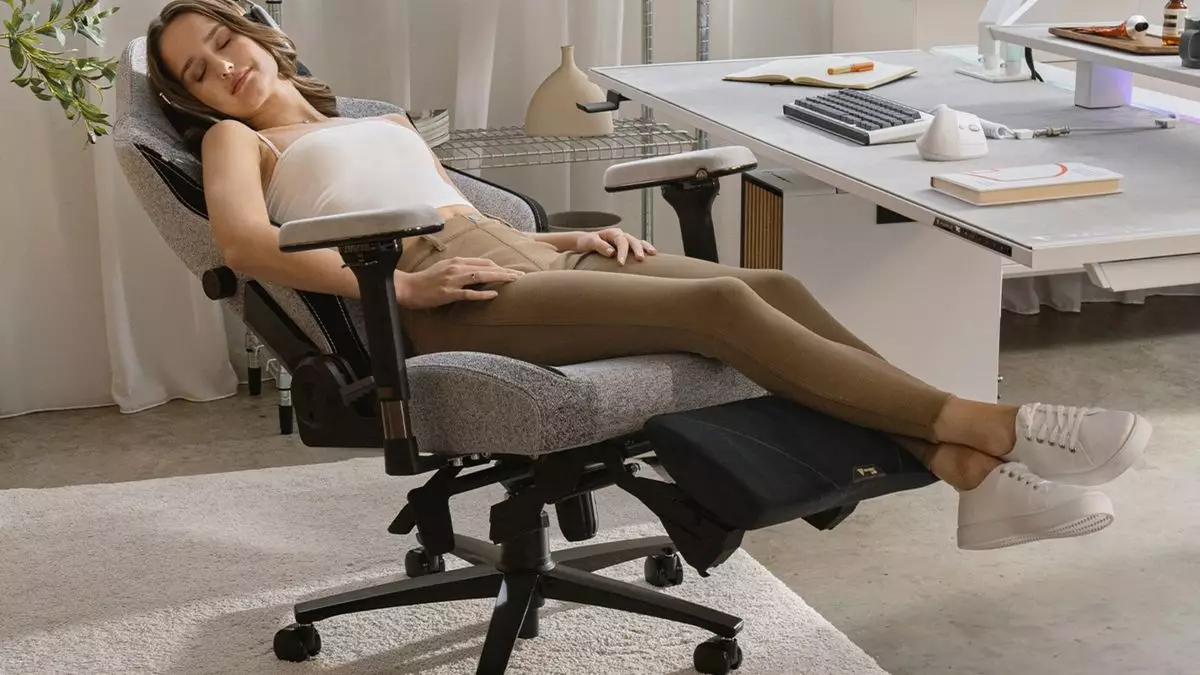In the rapidly evolving world of gaming chairs, Secretlab has cemented its reputation with products lauded for comfort and ergonomics. Yet, the company has recently launched an accessory that raises some eyebrows: a cushion tool designed to expand the reclining capabilities of their chairs. While marketed as a means for maximizing comfort—including the ability to take naps—the rationale behind this addition warrants closer examination.
At first glance, Secretlab’s latest offering—a memory foam cushion that allows users to lean back even further—appears innovative. The product, measuring 230 mm by 430 mm, hooks onto their popular Titan Evo and Classic chairs. It features a clever design employing “microscopic memory pockets” aimed at providing better pressure relief to the legs. The cushion can adjust from a recline of 0° to 80°, making it seemingly versatile for different user needs.
In theory, it’s an interesting concept, catering to gamers and professionals who may wish for additional comfort when seated for hours. Moreover, the setup process is remarkably swift, requiring only three minutes to install. However, a practical inquiry emerges: does this extra cushion truly enhance the gaming experience, or is it merely an additional item designed to entice consumers?
While the cushion tool has been designed with some innovative elements, there is a palpable sense of over-engineering at play. The stated benefits, including the ability to recline further during a gaming session or potentially catch a nap, are dubious for anyone who has tried to sleep in an upright chair.
Moreover, the price point, with the Standard Edition tagged at $199 and the Founder’s Edition even higher, raises valuable questions about comparative worth. For a product designed to augment comfort, the cost may outweigh the benefit for many customers. It prompts a reflective consideration on consumer behavior: do we really value gadgets over genuine ergonomic improvements?
Furthermore, the target demographic for this cushion seems unclear. While those with mobility issues may find it more viable, it is not emphasized as a primary feature—it risks alienating the average gamer or remote worker focused on effective ergonomic design.
Gaming chairs, by design, are intended for long hours of sitting, and while comfort is crucial, the introduction of a napping feature could suggest an unhealthy trend. Promoting napping in a chair may inadvertently encourage sedentary behavior rather than fostering healthy breaks away from screens. Gaming culture is already saturated with narratives about “no breaks,” and the promotion of a chair that allows for prolonged sitting—even during sleep—does little to counteract this ethos.
Many would argue that a proper sleeping arrangement significantly trumps any gaming chair adaptations for rest. With the essential need for good posture and health, it seems misguided to market a cushion that may facilitate poor habits. A truly beneficial product in this realm would challenge traditional notions of how we interact with our gaming setups, rather than simply adapting them to allow further excesses.
While Secretlab’s new cushion tool is certainly a novel idea, its practicality and value are profoundly called into question. While it brings unique engineering features to a beloved chair, the overarching narrative seems rooted in commercial appeal rather than addressing genuine comfort and ergonomic needs.
For those looking to invest, the financial aspect is significant, especially when alternative upgrades—like SSDs or more immersive gaming experiences—offer greater utility and satisfaction. As the gaming chair market continues to expand, discerning consumers ought to prioritize health and functionality over unnecessary accessories that may contribute more to excess than enhancement.

